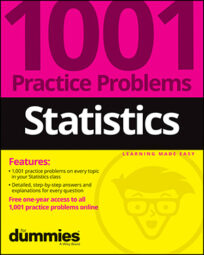Like every subject, statistics has its own language. The language is what helps you know what a problem is asking for, what results are needed, and how to describe and evaluate the results in a statistically correct manner. Here's an overview of the types of statistical terminology:
Four big terms in statistics are population, sample, parameter, and statistic:
A population is the entire group of individuals you want to study, and a sample is a subset of that group.
A parameter is a quantitative characteristic of the population that you're interested in estimating or testing (such as a population mean or proportion).
A statistic is a quantitative characteristic of a sample that often helps estimate or test the population parameter (such as a sample mean or proportion).
Descriptive statistics are single results you get when you analyze a set of data — for example, the sample mean, median, standard deviation, correlation, regression line, margin of error, and test statistic.
Statistical inference refers to using your data (and its descriptive statistics) to make conclusions about the population. Major types of inference include regression, confidence intervals, and hypothesis tests.

